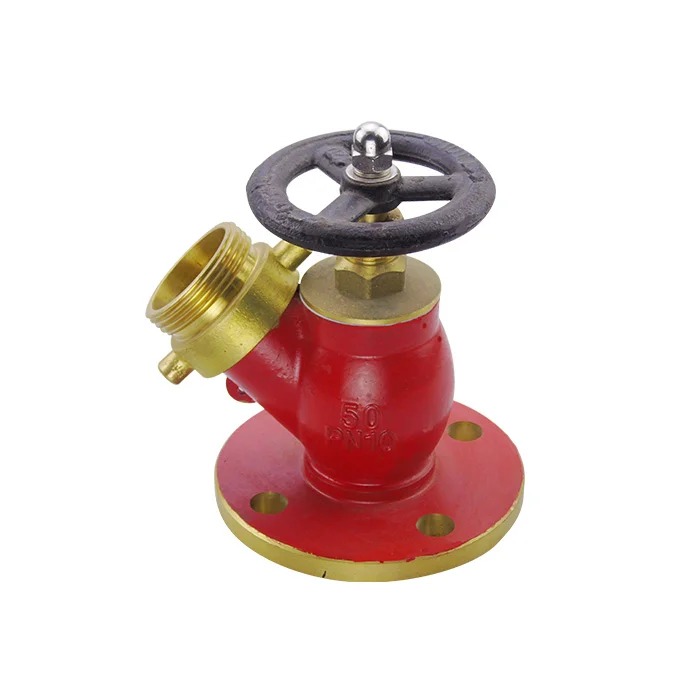The Importance of Regular Maintenance for Durable ANSI Standard USA Flanged Fire Hydrants
Fire hydrants are essential components of any community's fire protection system. They provide firefighters with a reliable source of water to extinguish fires and protect lives and property. However, fire hydrants are often overlooked when it comes to maintenance, which can lead to malfunctions and failures during emergencies. In this blog post, we will discuss the importance of regular maintenance for durable ANSI standard USA flanged fire hydrants.
What is an ANSI Standard USA Flanged Fire Hydrant?
An ANSI standard USA flanged fire hydrant is a type of fire hydrant that meets the American National Standards Institute (ANSI) standards for design, performance, and testing. These standards ensure that the fire hydrant is durable, reliable, and able to withstand harsh environmental conditions. The flanged design of the fire hydrant allows it to be easily connected to a water main using a flange connection.

Why is Regular Maintenance Important for Fire Hydrants?
Regular maintenance is essential for ensuring that fire hydrants are functioning correctly and are ready to use in case of an emergency. Neglecting maintenance can lead to malfunctions and failures that can put lives and property at risk. Here are some reasons why regular maintenance is important for fire hydrants:
1. Prevents Corrosion and Rust
Fire hydrants are exposed to harsh environmental conditions, such as rain, snow, and extreme temperatures. Over time, these conditions can cause corrosion and rust to develop on the fire hydrant's exterior and interior components. Corrosion and rust can weaken the fire hydrant's structure and reduce its ability to withstand high water pressure. Regular maintenance, such as cleaning and painting, can prevent corrosion and rust from developing and extend the life of the fire hydrant.
2. Ensures Proper Functioning
Fire hydrants have several components that need to work together to provide water to firefighters. These components include the valve, nozzle, and hose connections. Regular maintenance ensures that these components are functioning correctly and are not damaged or worn out. Malfunctioning components can prevent firefighters from accessing water during an emergency, which can have disastrous consequences.
3. Identifies and Addresses Issues Early
Regular maintenance allows firefighters and maintenance personnel to identify and address issues early before they become major problems. For example, a leaking valve can be repaired before it causes water pressure issues or a broken nozzle can be replaced before it prevents firefighters from accessing water. Early identification and repair of issues can prevent costly repairs and downtime during emergencies.
4. Ensures Compliance with Regulations
Fire hydrants are subject to regulations and standards set by local and national authorities. Regular maintenance ensures that fire hydrants are compliant with these regulations and standards. Non-compliant fire hydrants can result in fines and legal liabilities.
What Does Regular Maintenance for Fire Hydrants Involve?
Regular maintenance for fire hydrants involves several tasks that should be performed on a schedule. Here are some of the tasks involved in regular maintenance for fire hydrants:
1. Inspection
Fire hydrants should be inspected regularly to ensure that they are functioning correctly and are not damaged or worn out. Inspections should include checking the valve, nozzle, and hose connections for leaks, cracks, and other damage. The exterior of the fire hydrant should also be inspected for corrosion and rust.
2. Lubrication
Fire hydrants have several moving parts that require lubrication to function correctly. These parts include the valve stem, operating nut, and hose connections. Lubrication should be performed regularly to prevent these parts from seizing up or becoming difficult to operate.
3. Cleaning
Fire hydrants should be cleaned regularly to remove dirt, debris, and other contaminants that can clog the valve and nozzle. Cleaning should include flushing the fire hydrant with water to remove any buildup inside the valve and nozzle.
4. Painting
Fire hydrants should be painted regularly to prevent corrosion and rust from developing. Painting should be performed using a high-quality paint that is designed for use on metal surfaces.
5. Testing
Fire hydrants should be tested regularly to ensure that they are providing the required water flow and pressure. Testing should be performed using a flow meter and pressure gauge to measure the water flow and pressure.
Conclusion
Regular maintenance is essential for ensuring that fire hydrants are functioning correctly and are ready to use in case of an emergency. Neglecting maintenance can lead to malfunctions and failures that can put lives and property at risk. Regular maintenance for fire hydrants involves several tasks, including inspection, lubrication, cleaning, painting, and testing. By performing regular maintenance, firefighters and maintenance personnel can ensure that fire hydrants are compliant with regulations and standards, prevent costly repairs and downtime during emergencies, and extend the life of the fire hydrant.
Shanghai Jingqi Technology Co., Ltd. is located at No. 1000, Heng'an Road, Pudong New Area, Shanghai, at 3030, with a superior geographical location. Currently, the company's production workshop is located in the Jiangsu Ocean Special Equipment Industrial Park, with a production area of 10000 square meters and an office area of 2500 square meters. There are more than 120 employees and more than 40 professional technical personnel, and the company has a complete set of advanced and complete production and testing equipment.Welcome to contact us!
Jingqi
jingqi888@aliyun.com

